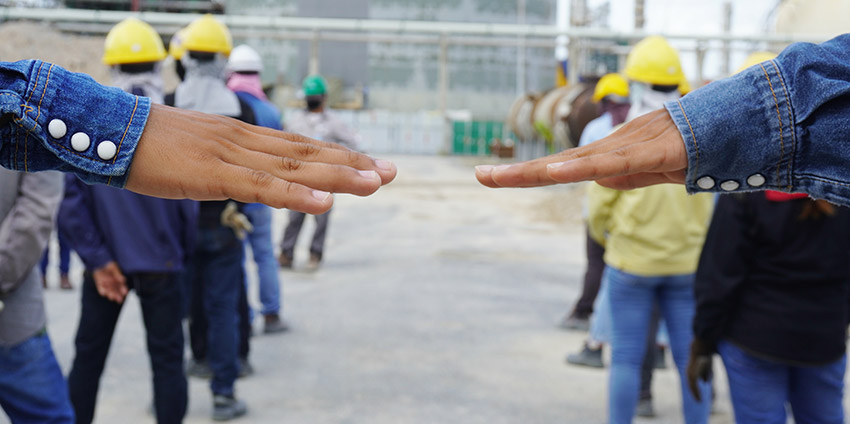Imagine you are a manager at a large distribution center. Your facility is around a half-million square feet, or about the same footprint as ten football fields. Hundreds of people work there each day to fulfill orders, plus many more during the busy holiday seasons. There is ample space but also plenty of “shoulder-rubbing” with this many people moving about.
Now imagine that COVID-19 begins its rapid spread throughout the world. Suddenly everyone in the facility is advised—and likely required—to stay at least six feet apart.
What do you do?
If you happen to be a decision-maker at a distribution center, you may have already lived this experience. Many of FlexSim’s clients found themselves in the same scenario in the Spring and Summer of 2020, and some are still working through these challenges while opening new warehouse spaces during the global pandemic.
Simulation can be a great solution to apply physical distancing practices to your warehouse.

“Don’t stand so close to me”
In the Summer of 2020, a large online retailer needed to update its distribution centers’ sortation processes. Local restrictions mandated that all employees adhere to a strict physical distancing policy.
The key was to make the required changes without a significant drop in throughput. (In this facility, throughput is the maximum number of packages to sanitize and sort in one hour.) In addition, most of the sortation process was manual, so any changes to operator movement were likely to affect efficiency.
Decision-makers at the distribution center quickly determined that they could no longer sustain this manual process under COVID-19 restrictions. So, what were the alternatives?
Adding distance in a simulation model
FlexSim was used to look at three alternative (and compliant) scenarios to determine which would perform best. Modelers can include a constraint like physical distancing in a few different ways. The most direct and consequential way is to create a proximity agent system, which allows you to detect proximity between agents (or operators), apply specific rules to the system, and have actions trigger when proximity is breached.
You can also set up a simple travel network that adheres to physical distancing protocols, and that is what this customer chose to do for their simulation study. In Scenario 1, they examined a slight change where a single operator would pick one item from a gravity roller conveyor, push the item ahead, and then move to the required pallet destination pallet to load. In Scenario 2, they updated the first scenario to include a cart—operators could now pick five packages, load them into a cart, and then carry and load those packages to the required pallet destinations. (This also has the advantage of requiring fewer aisles.)

Despite maximizing the number of operators under the physical distancing constraints, Scenario 1 and Scenario 2 showed a low expected throughput (33% and 21%, respectively, compared to pre-pandemic throughput rates).
Some creative sortation re-design
Scenario 3 is a departure from the first two plans. It calls for presorting the incoming volume into zones of pallets instead of operators picking directly from the conveyor. I cannot show this layout or detail the process, but this design trends toward higher utilization of operators while sorting (since they have many items to sort). At the same time, operator utilization is low while they wait for carts to fill. A significant advantage is that operators can stay in their zones instead of traveling across the entire sorting area.
Simulation experiments with this scenario showed a 62% throughput compared to pre-pandemic levels, which significantly outperformed the other plans. The results were promising enough that this process has already been changed based on these recommendations—and it is even performing slightly better in the real world than what the simulation showed!
